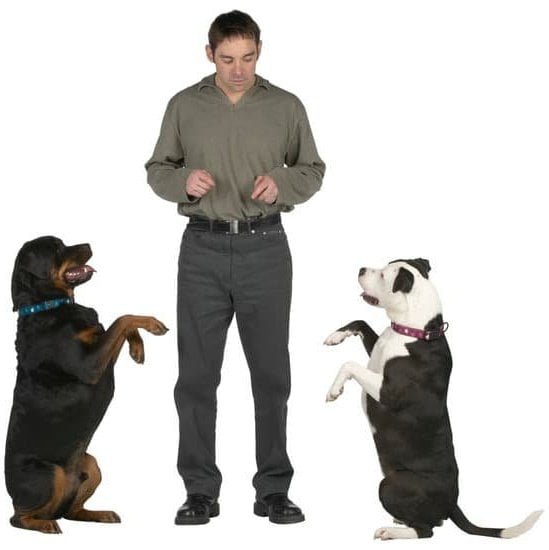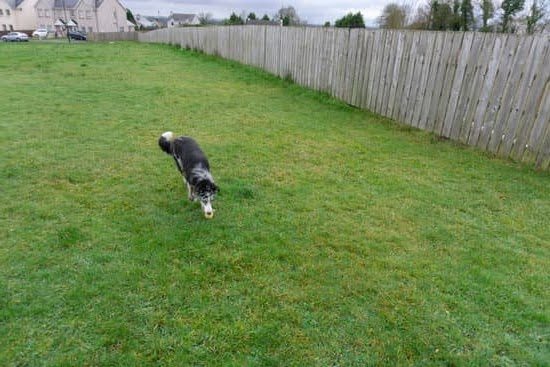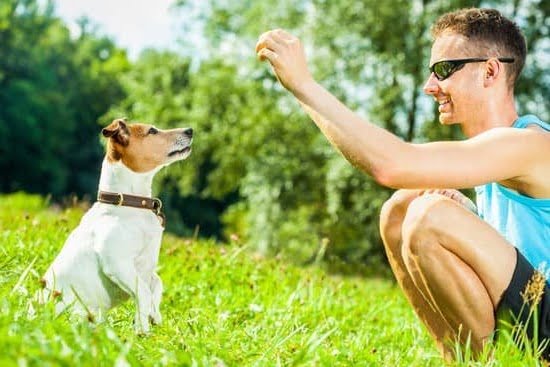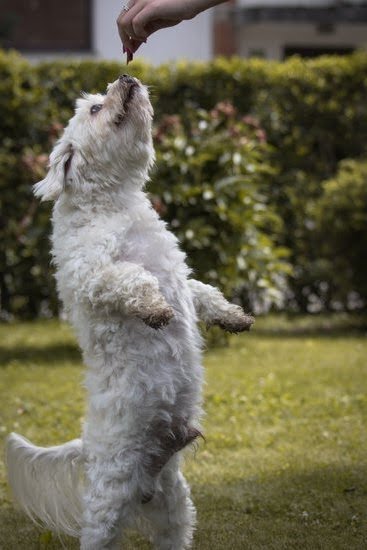Potty training is an essential part of owning a dog, but many people are unsure about when is the right time to start this process. In this article, we will explore everything you need to know about potty training and address common misconceptions about the ideal timing for starting it. We will delve into different perspectives on early potty training and discuss signs of readiness to help you determine when your dog is ready to begin.
Additionally, we will provide specific guidelines for different breeds and offer tips on establishing a potty training schedule. Finally, we will emphasize the importance of patience and persistence in achieving success with potty training. So whether you’re just getting started or encountering some challenges along the way, this article has got you covered with all the information and support you need for successful potty training.
Early Potty Training
Many dog owners have been taught to wait until a certain age before starting potty training with their furry friend. However, a different perspective on early potty training is emerging in the dog training world. This new approach focuses on a puppy’s cognitive development rather than relying solely on age as an indicator of readiness.
Traditionally, it was believed that dogs should reach a certain age, typically around 6 months old, before potty training can begin. The idea behind this was that puppies needed time for their bladders and bowels to develop fully. However, recent research suggests that dogs may be able to learn appropriate bathroom habits at an earlier age.
Instead of waiting for the perfect age milestone, many trainers now advocate for early potty training based on a puppy’s cognitive development. Puppies start developing their learning abilities as early as 3 weeks old and can begin to understand simple commands and cues by 8 weeks old. By starting early potty training during this critical learning period, puppies can establish good habits from an early age and minimize accidents indoors.
Introducing Early Potty Training
Early potty training involves creating a routine that encourages puppies to eliminate in appropriate areas outside the house. Here are some key elements of this new perspective:
- Frequent Bathroom Breaks: Puppies have small bladders and need frequent opportunities to relieve themselves. Taking them outside every 1-2 hours is a good starting point, gradually expanding the time between each bathroom break as they grow older.
- Consistent Cue Words: Introducing consistent cue words or phrases when taking your puppy outside helps them make associations between the cue word and going potty. Use simple words like “go potty” or “do your business” consistently during each bathroom break.
- Close Supervision: Keeping a close eye on your puppy when indoors allows you to interrupt any potential accidents before they happen. If you see your puppy displaying signs that they need to go, such as sniffing or circling, quickly take them outside to their designated potty area.
Early potty training can be a game-changer for both puppies and their owners. By focusing on a puppy’s cognitive development and starting early, dogs can develop good bathroom habits from the beginning of their lives. This approach sets them up for success in other areas of training and strengthens the bond between owner and dog.
Signs of Readiness
Understanding Behavioral and Physical Signs
Before diving into the potty training process, it is essential to ensure that your dog is ready for this phase of their development. Fortunately, dogs tend to show some clear signs when they are prepared to start potty training. These signs can be observed through both their behavior and physical changes.
Behavioral signs may include your dog sniffing around the house or circling a specific area before relieving themselves. They may also display signs of discomfort or restlessness when they need to go. On the other hand, physical signs may include a visible change in their posture or a sudden attempt to squat. By paying close attention to these indicators, you can identify when your dog needs to go and take them outside promptly.
A Checklist for Assessing Readiness
To determine if your dog is ready for potty training, it can be helpful to create a checklist and assess their readiness based on specific criteria. Here are some essential factors you should consider:
- Age: While age alone is not always an accurate measure of readiness, most dogs are physically capable of controlling their bladder and bowel movements between 12-16 weeks old.
- Consistency: Does your dog have regular bathroom habits? If they tend to relieve themselves in predictable patterns, it suggests that they have the capability to develop a routine.
- Alertness: Is your dog aware of their bodily functions? If they seem conscious of needing to relieve themselves by displaying any of the behavioral signs mentioned earlier, it shows that they possess some level of awareness.
By assessing your dog’s age, consistency in habits, and alertness levels, you can gauge their readiness for potty training and move forward confidently.
Addressing Individual Differences
It’s important to note that each dog is unique and may exhibit individual differences when it comes to potty training readiness. Some dogs may be ready as early as 10 weeks old, while others may take longer to show signs of readiness. Additionally, factors such as breed and size can also play a role in the timing of potty training.
Smaller dog breeds generally have a smaller bladder capacity and may need more frequent bathroom breaks compared to larger breeds. In contrast, some larger breeds may physically mature at a slower rate, requiring extra patience and consistency during the potty training process. Researching your specific breed can provide insights into their typical readiness timeline and help you tailor your approach accordingly.
By understanding the signs of readiness, conducting an assessment checklist, and considering individual differences based on breed and size, you can determine when your dog is prepared to begin their potty training journey. Remember that patience and consistency play crucial roles in making this process successful, so take your time and celebrate each milestone along the way.
Age Considerations
When it comes to potty training a dog, age is an important factor to consider. While there is a general age range when most dogs are ready for potty training, it’s essential to take into account the specific needs and characteristics of different dog breeds. Understanding your dog’s breed-specific guidelines can greatly contribute to the success of their potty training journey.
It’s important to note that smaller dog breeds generally have smaller bladders and higher metabolisms, which means they may need more frequent bathroom breaks compared to larger breeds. Puppies from small breeds such as Chihuahuas, Yorkshire Terriers, or Toy Poodles can start their potty training as early as 8-10 weeks old. However, it’s crucial to be patient and consistent with their training due to their tiny bladders and limited bladder control.
Medium-sized breeds like Beagles, Cocker Spaniels, or Bulldogs are usually ready for potty training between 12-16 weeks of age. These breeds often have better bladder control compared to smaller dogs but still require regular trips outside. It’s recommended to follow a consistent schedule and gradually increase the time between bathroom breaks as their bladder capacity develops.
Larger dog breeds such as Labrador Retrievers, German Shepherds, or Golden Retrievers tend to have better bladder control and larger bladders compared to smaller or medium-sized breeds. They typically show greater readiness for potty training around 16-20 weeks of age. However, it’s important not to rush the process and be mindful of their individual development.
When determining the appropriate timing for potty training your dog based on breed-specific guidelines, always consider individual differences in temperament and behavior. Some dogs may exhibit signs of readiness earlier or later than expected. It’s crucial to closely observe your furry companion for behavioral cues and consult your veterinarian if you have any concerns about your dog’s readiness for potty training.
By understanding the age considerations and specific guidelines for different breeds, you can tailor your potty training approach to better meet your dog’s needs. Remember, every dog is unique, and patience and consistency are key when it comes to successfully potty training your canine companion. In the next section, we will explore how to establish a proper potty training schedule that aligns with these age considerations for different breeds.
Settling into Routine
Establishing a consistent routine is crucial for successful potty training. Dogs are creatures of habit, and having a set schedule will help them learn when and where to go potty. This section will outline the importance of establishing a potty training schedule and provide tips on how to create one.
The Importance of Establishing a Consistent Routine
Having a consistent routine is essential because it helps dogs understand what is expected of them. When you establish a potty training schedule, your dog will learn when they should expect to go outside to eliminate. This consistency creates structure and reduces confusion for your dog.
A potty training schedule also helps owners manage their dog’s bathroom needs effectively. By knowing when your dog needs to go, you can plan accordingly and prevent accidents in the house. Additionally, having a routine helps speed up the potty training process as it reinforces good habits consistently.
Elements of a Successful Potty Training Schedule
When creating a potty training schedule, there are several elements to consider.
- Frequency: Puppies have smaller bladders and need more frequent bathroom breaks compared to adult dogs. As a general rule, puppies should be taken outside every 1-2 hours during the day and once or twice during the night. Older dogs may need shorter intervals between bathroom breaks.
- Meal Times: Feeding your dog at regular intervals will help regulate their digestive system, making it easier to predict when they’ll need to relieve themselves after meals. It’s recommended to feed your dog at specific times each day rather than free-feeding.
- Consistency: Try to take your dog outside through the same door and use the same command each time they need to eliminate. This consistency will reinforce the association between the cue and the desired behavior.
- Supervision: Until your dog is fully potty trained, it’s important to supervise them closely indoors or keep them confined in an area where accidents can easily be cleaned up. This will prevent them from having opportunities to eliminate indoors and reinforce the habit of going outside.
By following these tips and being consistent with your potty training schedule, you’ll set your dog up for success in their potty training journey. Remember that accidents may happen, especially during the early stages, so it’s essential to be patient and persistent throughout the process.
Positive Reinforcement
When it comes to potty training a dog, using positive reinforcement techniques is crucial for success. Positive reinforcement focuses on rewarding and reinforcing desired behaviors, rather than punishing or scolding for accidents or mistakes. By using positive reinforcement, you can create a positive association with potty training and motivate your dog to continue doing the right thing.
There are several effective training techniques that incorporate positive reinforcement:
- Rewards: Using treats as rewards can be highly effective in potty training. Whenever your dog successfully goes potty outside, immediately give them a treat and praise them enthusiastically. This helps create a connection between going potty outside and receiving rewards, reinforcing the desired behavior.
- Verbal cues: Associating specific words or phrases with the act of going potty can help your dog understand what is expected of them. Choose a cue word or phrase, such as “go potty” or “do your business,” and consistently use it whenever you take your dog outside to go to the bathroom. Over time, they will start to associate the cue with going potty and will respond accordingly.
- Clicker training: Clicker training involves using a small clicker device that makes a distinct sound when pressed. Pair this sound with giving your dog treats every time they go potty outside. Eventually, the sound of the clicker alone will indicate to your dog that they have done something good and will be rewarded.
Remember, consistency is key when using positive reinforcement techniques. Always reward your dog immediately after they go potty in the appropriate spot, so they understand what behavior is being reinforced. It’s also important to be patient and understanding during the training process – accidents may happen, but remaining consistent with positive reinforcement will help your dog learn more quickly.
By incorporating these effective training techniques into your potty training routine, you can create a positive and enjoyable experience for both you and your furry friend. Positive reinforcement not only helps your dog learn proper bathroom habits, but it also strengthens the bond between you and your pet. So be patient, consistent, and reward your dog for their successes – you’ll be well on your way to a successfully potty trained pup.
Common Challenges
It is common for dog owners to face challenges and setbacks during the potty training process. Understanding and addressing these issues is crucial in order to maintain progress and successfully potty train your dog. This section will provide practical solutions for common potty training problems that dog owners may encounter.
One common challenge is accidents inside the house. It is important to remember that accidents are a normal part of the potty training process, especially in the beginning stages. If you catch your dog in the act of having an accident, redirect them immediately to their designated bathroom spot outside or on a designated pad indoors.
Avoid scolding or punishing them as it can create fear and confusion. Instead, clean up the accident thoroughly with an enzyme-based cleaner to eliminate any lingering scent.
Another challenge dog owners might face is regression during potty training. Regression can occur when a previously well-trained dog starts having accidents again, typically due to changes in their routine or environment. To address regression, it is essential to evaluate any recent changes that may have caused stress or anxiety for your dog and address them accordingly. Reinforce consistency by sticking to their established routine and providing plenty of positive reinforcement when they eliminate in the appropriate spot.
Additionally, some dogs may show refusal to go outside for bathroom breaks. This could be due to various reasons such as fear of certain outdoor elements or discomfort caused by extreme weather conditions. In such cases, gradually desensitizing your dog to these stimuli can help overcome their reluctance to go outside. Start by exposing them to these elements in short intervals while providing treats and praise for positive behavior.
| Common Challenge | Solution |
|---|---|
| Accidents inside the house | – Redirect immediately
|
| Regression in potty training | – Evaluate recent changes, stressors, or anxiety
|
| Refusal to go outside | – Gradually desensitize to outdoor elements
|
Patience and Persistence
Successfully potty training a dog requires a great deal of patience and persistence from the dog owner. It is important to remember that every dog is unique and will learn at their own pace. Some dogs may catch on quickly, while others may need more time and repetition. The key is to remain patient and consistent throughout the process.
Consistency is crucial when it comes to potty training. Establishing a routine will help your dog understand when and where they are expected to go potty. Set specific times for bathroom breaks, such as first thing in the morning, after meals, before bedtime, and regularly throughout the day. Taking your dog to the same spot each time will further reinforce the desired behavior.
When accidents happen, it’s important not to scold or punish your dog. Instead, focus on redirecting them towards appropriate behavior. If you catch your dog in the act of going potty indoors, calmly interrupt them and take them outside to finish. Accidents may happen during the learning process, but it is essential to remain patient and avoid getting discouraged.
Positive reinforcement plays a significant role in successful potty training. Whenever your dog goes potty in an appropriate area, be sure to praise them enthusiastically and offer a treat as a reward. This positive association will help reinforce the desired behavior and motivate your dog to continue doing so in the future.
Remember that each milestone achieved in potty training should be celebrated as a step towards success. Whether it’s your dog signaling that they need to go outside or going an entire day accident-free, take note of these accomplishments and offer plenty of praise or rewards. By remaining patient and persistent throughout the process, you can achieve successful potty training with your furry friend.
Conclusion
In conclusion, potty training a dog is an essential and rewarding process that should not be delayed. By shifting our perspective and focusing on a puppy’s cognitive development rather than age alone, we can start potty training earlier and set our furry friends up for success. It is crucial to pay attention to the signs of readiness, such as behavioral and physical cues, before embarking on the potty training journey.
As we discussed throughout this article, establishing a consistent routine is key to successful potty training. By following a schedule that includes regular bathroom breaks and mealtimes, we can help our dogs develop good habits and avoid accidents. Additionally, positive reinforcement techniques such as rewards, treats, and praise play a vital role in shaping their behavior and encouraging them throughout the process.
While challenges may arise during potty training, it is important to remain patient and persistent. Setbacks are normal, but with dedication and consistency, we can overcome them. Remember to celebrate every milestone along the way, no matter how small it may seem. Each successful bathroom break outside or accident avoided indoors brings us closer to achieving full potty training success.
So now it’s time for you to start your own potty training journey with your dog. Don’t wait any longer – take the first step towards a cleaner home and stronger bond with your furry companion. We invite you to share your experiences with us – whether they be challenges you’ve overcome or milestones you’ve celebrated. Together, let’s embrace the wonderful adventure of potty training our beloved dogs.
Frequently Asked Questions
Can an 8 week old puppy be potty trained?
Potty training an 8-week-old puppy is possible, but it requires patience, consistency, and frequent bathroom breaks. At this age, puppies are still developing their bladder control and may not have full awareness of the need to eliminate outside.
It is crucial to establish a routine for scheduled potty breaks and reward the puppy for eliminating in the appropriate spot. Expect accidents to occur during this early stage of training as the puppy learns where they should go to relieve themselves.
At what age should a puppy be potty trained?
The ideal age for potty training a puppy is generally around 12-16 weeks old. By this time, most puppies have developed better bladder control and can hold their urine for longer periods.
At this age, they are also more cognitively capable of understanding commands and learning obedience. However, it’s important to note that individual dogs may vary in their progress, so it’s essential to be patient and adapt the training approach to fit your specific pup.
What dog breeds are hardest to potty train?
While each dog is unique and can present its own set of challenges during potty training, some breeds are known for being more stubborn or independent, which can make the process more difficult. Breeds like Dachshunds, Basset Hounds, strong-willed terriers such as Jack Russell Terriers or Yorkshire Terriers, and Afghan Hounds are often considered among the hardest breeds to potty train due to their independent nature or instinctual behaviors related to hunting or scent tracking.
However, it’s crucial to remember that with proper consistency, positive reinforcement methods can help overcome these difficulties regardless of breed.

Welcome to the blog! I am a professional dog trainer and have been working with dogs for many years. In this blog, I will be discussing various topics related to dog training, including tips, tricks, and advice. I hope you find this information helpful and informative. Thanks for reading!





